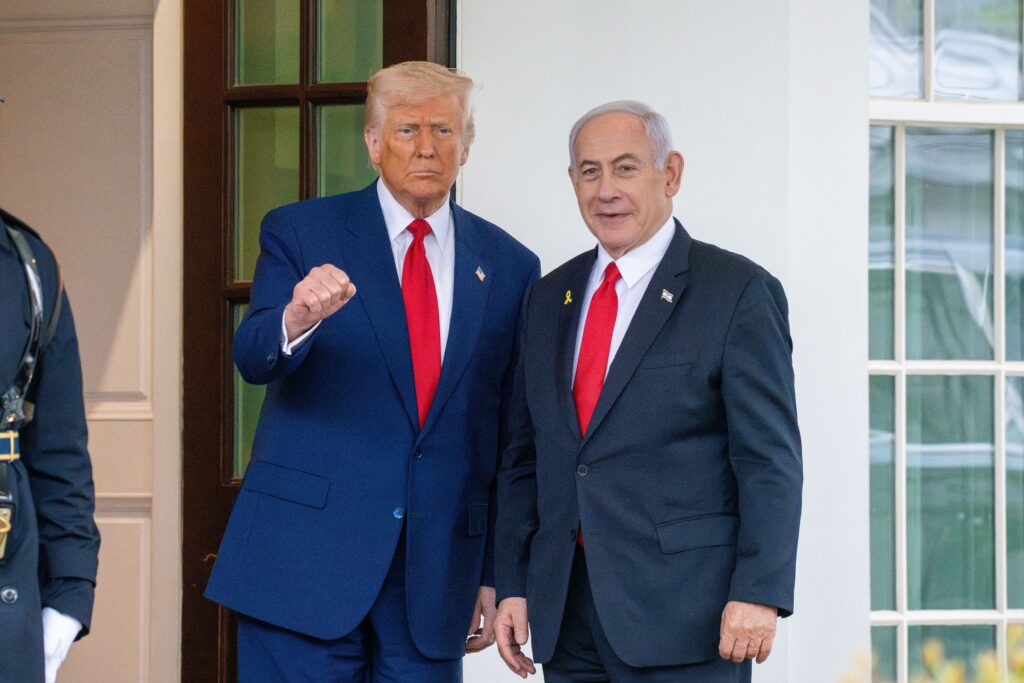US President Donald Trump and Israeli Prime Minister Benjamin Netanyahu jointly revealed a sweeping 20-point strategy on September 29 to end the war in Gaza.
Trump developed the plan after extensive consultations with Arab and Muslim nations, including Egypt, Qatar, and Turkey.
Reports indicate that an Israeli airstrike on Doha, which violated Qatar’s sovereignty and targeted Hamas negotiators, triggered Trump’s push to halt the conflict.
With domestic politics allowing greater flexibility, Trump increased pressure on Israel during his second term, as Israel had already met key military goals in Iran, Lebanon, and Gaza.
On October 8, Trump confirmed that Israel and Hamas had signed the first phase of the deal, marking the start of an ambitious peace process.
Phase One: Ceasefire and Immediate Humanitarian Relief
The first stage of the agreement requires an immediate ceasefire, freezing all military operations and combat zones.
Within 72 hours, all Israeli hostages—both living and deceased—must be released without delay.
In exchange, Israel will free 1,950 Palestinian prisoners, including 250 serving life sentences.
International monitors will oversee compliance to ensure all parties uphold the ceasefire.
The United Nations and Red Crescent teams will coordinate humanitarian efforts to deliver food, water, and medical supplies to Gaza.
This stage focuses on stabilizing conditions on the ground and preventing further civilian casualties.
Phase Two: Disarmament and Regional Security Cooperation
Phase Two will begin once all hostages are released.
The plan mandates the full dismantling of Hamas’s offensive capabilities, including rocket stockpiles, tunnels, and command centers.
Trump’s team described Gaza’s future as a “de-radicalized, terror-free zone” that poses no danger to neighboring nations.
The agreement offers amnesty to Hamas members who disarm and accept peaceful coexistence, while others may choose exile with safe passage.
A multinational stabilization force, composed of US, Arab, and European troops, will maintain security and train a new Palestinian police force.
This phase aims to build long-term stability through strict demilitarization and international cooperation.
Phase Three: Reconstruction and Political Transition
The third phase establishes a temporary technocratic administration led by Palestinian professionals and supervised by an international council.
This body will manage public services, infrastructure rebuilding, and governance reforms in coordination with the “Board of Peace,” chaired by Trump.
Former UK Prime Minister Tony Blair will serve as one of the senior international advisors.
The United Nations and Red Crescent will monitor aid distribution to ensure transparency and prevent corruption.
Reconstruction efforts will focus on restoring homes, schools, hospitals, and vital infrastructure destroyed during the war.
Palestinians will receive financial incentives and logistical support to remain in Gaza and rebuild their communities.
The plan envisions a future Palestinian state, contingent upon reform within the Palestinian Authority and progress in reconstruction.
However, Trump’s administration stopped short of pledging formal US recognition of such a state.
On September 30, Netanyahu firmly rejected the idea of statehood under the agreement, stating that no Palestinian state would emerge from Trump’s plan.
The proposed roadmap reflects a complex balance of diplomacy, demilitarization, and reconstruction, aiming to end years of conflict and foster a new regional order. Whether the initiative succeeds will depend on the cooperation of all involved parties and sustained international oversight.


